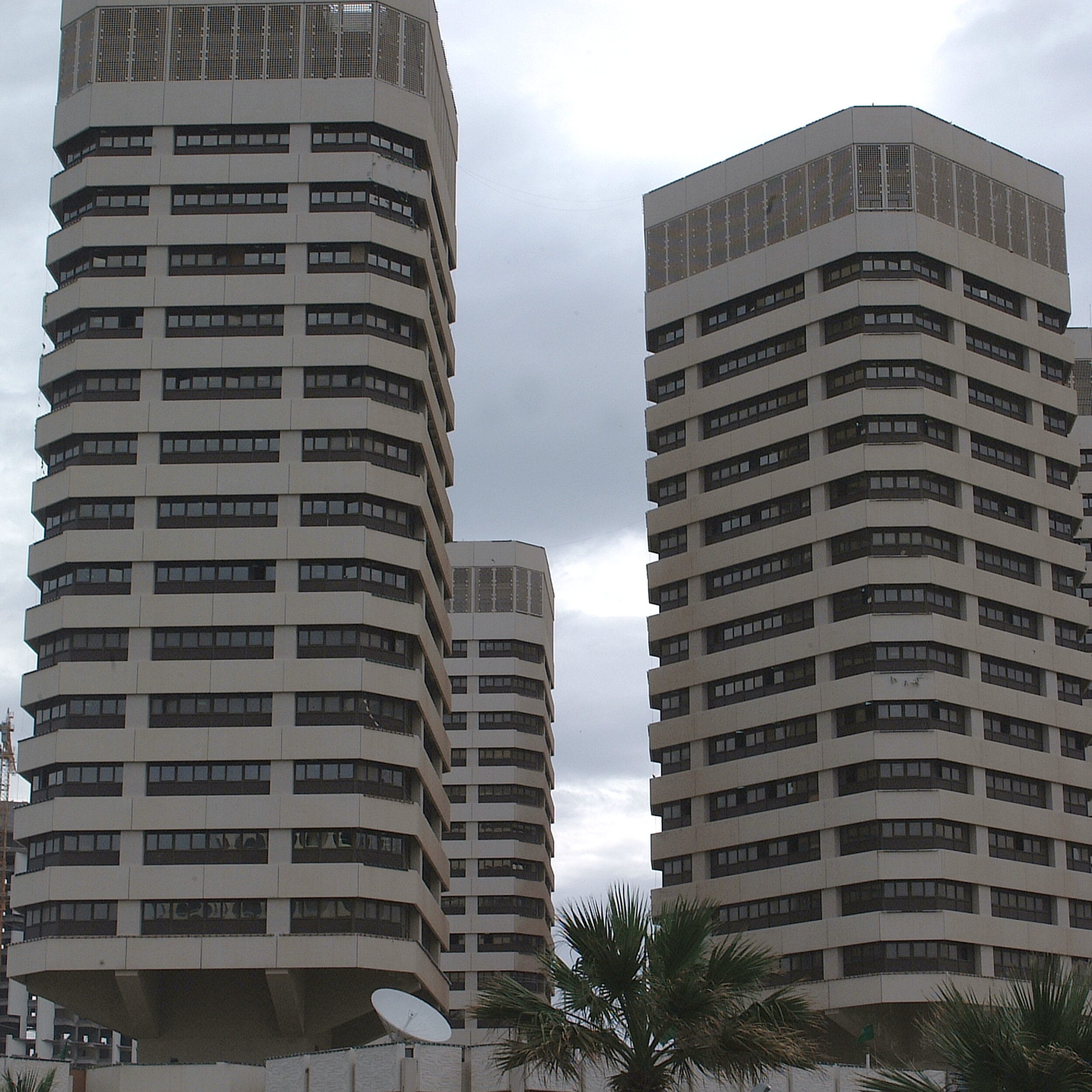ARCHITECTURE of the jamahiriya.
This period during which Libya attained independence was marked by economic vulnerability. In the early 1950’s, save for a handful of government buildings and the areas which had comprised the primary residency areas of Italian settlers, the infrastructure of Libya was generally poor and the native Libyans lived primarily in areas that lacked necessary services.
People’s Hall in Tripoli, which housed the General People’s Congress, constructed in the late 70’s early 80s, destroyed following 2011 revolution.
Abdul-Jawad Elhusuni (عبدالجواد الحسوني), CC BY-SA 3.0 Public domain, via Wikimedia Commons.
Libya’s oil industry expansion in the 1960s, brought the nation much needed financial resources, allowing Libya to develop its infrastructure and launch significant residential, commercial and governmental construction initiatives, particularly following the commencement of the Gadhafi regime in 1969 and the creation of the Jamahiriya. However, the increase in government led initiatives also ushered in a period of utilitarian architecture, which prioritised function over aesthetic and borrowed heavily from the pragmatic architecture of post-war Europe1.
Grand Hotel in Tripoli. Abdul-Jawad Elhusuni (عبدالجواد الحسوني), CC 3.0 Public domain, via Wikimedia Commons.
Highly functional multi-tower residential complexes and hotels became a hallmark of Libyan construction in the 1970s and 1980s, such as the new Grand Hotel in Tripoli, built in 1982 and designed by the British firm of Wakeman Trower & Partners Ltd, a bland replacement of the original Grand Hotel built in a distinctive Neomoresco (Neomoorish) style by the Italians in 1927 and damaged during World War 2 and eventually demolished.
The original Grand Hotel in Tripoli, built by the Italians, with its Distinctive Neomoresco style.
libya-alghad.com. Public domain, via Wikimedia Commons
That El Emad Towers
Another example of the highly functional and unadorned buildings of this period are That El Emad Towers, in the downtown Tripoli area, built by South Korean company Daewoo Engineering & Construction between 1984 and 1990.
FOOTNOTES.
Azlitni B. The Libyan Architectural Features Between Tradition and Modernization, Int. Journal for Housing Science, Vol.33, No.3 pp. 137-148, 2009 Published in the United States




